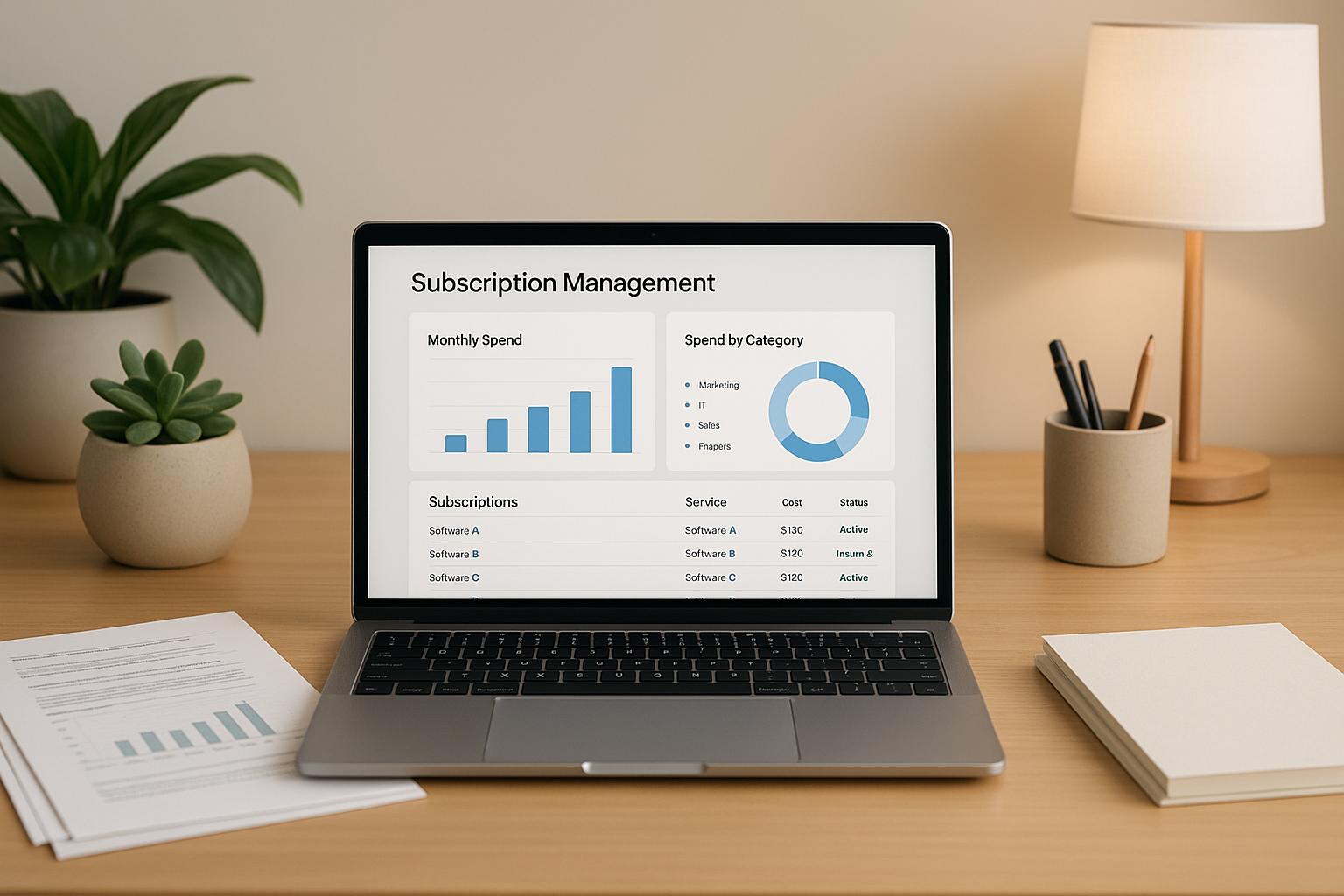Top Valuation Methods for Renewable Energy Projects

Valuing renewable energy projects requires methods that address their unique financial and regulatory complexities. Here's a quick breakdown of the four most effective approaches:
- Discounted Cash Flow (DCF): Projects future cash flows, adjusted for risks and incentives like tax credits.
- Comparable Transactions: Benchmarks value using recent deals in the same space, focusing on metrics like $/MW.
- Market Multiples: Uses ratios (e.g., EV/EBITDA) from similar public companies to estimate project value.
- Levelized Cost of Energy (LCOE): Calculates the cost per unit of energy over a project's lifetime, ideal for comparing technologies.
Each method has strengths and limitations, and combining them often yields the most accurate results. For example, DCF is great for long-term cash flow analysis but sensitive to assumptions, while LCOE simplifies cost comparisons but overlooks revenue structures.
Key takeaway: The right valuation approach depends on project specifics, regulatory conditions, and financial goals.
1. Discounted Cash Flow (DCF) Analysis
Methodology Overview
Discounted Cash Flow (DCF) analysis is a method used to estimate the value of an asset by projecting future cash flows and discounting them to their present value. Essentially, it calculates the net present value (NPV) of those cash flows. This approach involves predicting the cash a project will generate and applying a discount rate to determine its current worth.
Harvard Business School Professor Suraj Srinivasan sums it up well:
"A DCF analysis is useful when investing money now and expecting some rewards in the future. A DCF analysis finds the intrinsic value of a business, which is the present value of the free cash flow the company is expected to pay its shareholders in the future. If the intrinsic value is higher than the current price, it could be a good investment opportunity."
The discounting process accounts for the time value of money. When applying DCF to renewable energy projects, it's crucial to consider factors like revenue generation, operational lifespan, regulatory incentives, and technological advancements over the project's duration.
Let’s break down the key assumptions that drive DCF models for renewable energy projects.
Key Inputs and Assumptions
The reliability of a DCF model hinges on three primary assumptions: operating assumptions (such as revenue growth and operating margins), the weighted average cost of capital (WACC), and terminal value assumptions (which include the long-term growth rate and exit multiple).
The WACC should reflect the required market returns for both equity and debt. The discount rate, a critical element, depends on factors such as the asset class, location, risks related to development and offtake, leverage levels, and the asset’s lifespan.
Here’s an example of discount rates for renewable energy projects in New York State, broken down by technology type:
| Technology Type | Debt Weighting | Debt Cost | Equity Weighting | Equity Cost | Base Discount Rate |
|---|---|---|---|---|---|
| Large-scale solar (5+ MW) | 51.9% | 4.00% | 48.1% | 10.58% | 7.16% |
| VDER Solar (1-5 MW) | 30.0% | 4.50% | 70.0% | 9.50% | 8.00% |
| Wind (1+ MW) | 31.6% | 4.00% | 68.4% | 12.28% | 9.66% |
Solar projects, for instance, often face risks related to merchant sales and uncontracted SREC (Solar Renewable Energy Certificate) revenue. Given these uncertainties, it’s critical to project the economic benefits over the system's expected life. This includes accounting for the timing of tax credits, depreciation, and state or local incentives, which can vary significantly year to year.
Advantages and Limitations
When based on sound data, DCF analysis can provide a solid estimate of an asset's intrinsic value, focusing on the project’s fundamental economics rather than market trends. However, the method is not without challenges. Assumptions about WACC and terminal value can introduce risks, especially if they’re overly optimistic or unrealistic.
To improve accuracy, industry benchmarks like levelized cost of energy (LCOE) or power purchase agreement (PPA) rates can help validate assumptions. Common mistakes include using the initial loan-to-value ratio as the long-term debt weighting, which can underestimate the WACC, or neglecting to include a risk premium for merchant sales or uncontracted renewable energy certificates.
Regulatory Impact
Regulatory policies play a significant role in shaping cash flow projections. Incentives like tax credits, feed-in tariffs, and renewable energy certificates can complicate DCF modeling.
For example, the Residential Clean Energy Credit provides a 30% benefit for properties placed in service from 2022 through 2032, with phased reductions to 26% in 2033 and 22% in 2034. Investment Tax Credits (ITC) and Production Tax Credits (PTC) also influence project cash flows by reducing upfront costs or offering ongoing benefits tied to energy production. When considering bonus depreciation, it’s essential to evaluate whether market participants would value these benefits at marginal tax rates and factor them into asset pricing.
Policy uncertainty, however, can complicate investment decisions. For instance, a floating offshore wind project under construction in Taiwan might have a higher discount rate than an operational solar farm in Germany, reflecting differences in regulatory environments and associated risks.
To ensure accurate valuations, projections and WACC should reflect the perspective of a typical market participant, rather than the current asset holder. This approach helps align valuations with broader market conditions rather than project-specific circumstances. These regulatory nuances highlight why precise DCF modeling is essential when comparing it with other valuation methods.
2. Comparable Transactions Analysis
Methodology Overview
Comparable Transactions Analysis is a valuation method that estimates a project's worth by comparing it to similar renewable energy deals in the market. Instead of relying on detailed financial models, this approach uses real-world transaction data to establish value benchmarks.
The process involves applying valuation multiples from similar transactions to the project being analyzed. For corporate-level deals, the Enterprise Value/EBITDA multiple is commonly used. At the project level, a $/MW multiple - based on the project's capacity - is more typical. The calculation is straightforward: take the relevant multiple from comparable deals and apply it to the matching metric of your project.
The methodology adapts to the development stage of renewable energy assets. For operating projects, EBITDA from the last full operational year is typically used. For projects under construction, analysts rely on projected EBITDA from the first full operational year. Meanwhile, development pipelines are valued using capacity-based multiples ($/MW), which account for milestones like securing permits, finalizing grid connections, or signing power purchase agreements. These specifics shape the inputs and comparisons discussed in the next section.
Key Inputs and Assumptions
The effectiveness of this method depends on identifying truly comparable projects - ones that share similar maturity levels, cost structures, technologies, and market conditions. Renewable energy projects vary significantly across these dimensions.
Technology plays a key role as well. For example, solar and wind energy have seen substantial growth, with solar capacity increasing by 88% to 18.6 gigawatts. However, the financial dynamics of a utility-scale solar farm differ significantly from those of an offshore wind project, so adjustments are necessary to ensure accurate comparisons.
The project's development stage also impacts valuation multiples. For instance, an offshore wind project in its early stages might be valued at less than $50,000 per MW, while a mid-stage project nearing construction could command $50,000 to $150,000 per MW. Specific milestones, such as finalizing permits or securing financing, can significantly influence these multiples.
It’s important to note that valuation multiples reflect current market sentiment, which may not keep pace with rapid changes in technology costs, regulatory shifts, or financing conditions.
Advantages and Limitations
This method has its strengths and weaknesses. It offers a quick way to gauge market-based valuations, making it useful for early-stage deal evaluations or when detailed project data is unavailable. However, its accuracy depends on finding truly comparable transactions. Even projects that seem similar on the surface may differ significantly in risk, cash flow, or regulatory exposure due to factors like location, technology, or contract structures.
Another limitation is that this approach captures only a snapshot of current market conditions. It doesn’t account for future factors like refinancing opportunities, revenue growth, or inflation, which are better addressed with methods like Discounted Cash Flow (DCF) analysis. Additionally, because this method relies on historical transaction data, it may lag behind recent market changes.
Regulatory Impact
Regulatory changes can significantly influence project valuations under Comparable Transactions Analysis. Shifts in policies can quickly alter project economics, making historical transaction multiples less relevant to current valuations.
For example, the Inflation Reduction Act (IRA) introduced enhancements to production tax credits (PTC) and investment tax credits (ITC), which have reshaped renewable energy project economics. A 10% increase in the ITC rate could boost project values by 4–8%, meaning transaction multiples from pre-IRA deals may no longer reflect today’s market.
State-level policies also play a role. Projects in states with aggressive renewable energy mandates, such as Renewable Portfolio Standards (RPS), often command higher multiples compared to those in regions with weaker policies. Incentives like feed-in tariffs and tax credits can increase projected revenues but also introduce risks, as future policy changes could impact those benefits. Projects heavily reliant on such incentives may trade at a discount due to this uncertainty.
To address these challenges, analysts often perform regulatory scenario analyses when applying transaction multiples. This helps account for current policy environments and potential changes. Many practitioners combine Comparable Transactions Analysis with DCF analysis to create a more rounded valuation that considers both market trends and regulatory factors.
3. Market Multiples Method
Methodology Overview
The Market Multiples Method estimates a project's value by using financial ratios like P/E (Price-to-Earnings), EV/EBITDA (Enterprise Value to Earnings Before Interest, Taxes, Depreciation, and Amortization), and P/S (Price-to-Sales) from similar public companies. Analysts identify companies with comparable characteristics - such as technology, scale, and market focus - and apply their valuation multiples to the project's financial metrics. For example, if comparable firms are trading at an EV/EBITDA ratio of 12x, that same multiple could be used to calculate the project's enterprise value based on its projected EBITDA. This method provides a structured approach to derive valuation estimates using industry benchmarks.
Key Inputs and Assumptions
The effectiveness of the Market Multiples Method hinges on selecting the right comparable companies. Renewable energy projects span a variety of technologies and business models, making direct comparisons tricky. To ensure accuracy, the financial metrics of the project being evaluated must align with those of the selected companies, including consistent accounting practices and operational assumptions. Additionally, market conditions - such as growth rates and advances in technology - can significantly influence trading multiples, especially given the dynamic nature of the renewable energy sector.
Advantages and Limitations
This method has both strengths and challenges. On the plus side, it provides a quick and straightforward way to benchmark renewable energy projects using widely recognized financial ratios. These ratios make it easier for investors, analysts, and lenders to communicate effectively. However, the approach assumes that the chosen comparable companies share similar growth trajectories, risk levels, and operational efficiencies with the project being valued. In reality, the renewable energy sector's diversity often makes this assumption unreliable. Projects with unique or niche characteristics may struggle to find suitable comparables, and historical data may fail to reflect future growth or technological advancements.
Regulatory Impact
Government policies significantly influence public company valuations, which in turn affect the multiples used in this method. Federal initiatives like the Inflation Reduction Act (IRA) have reshaped the renewable energy landscape by introducing enhanced tax credits and incentives, leading to shifts in trading multiples. State-level policies also play a role - companies operating in states with strong renewable mandates often command higher multiples compared to those in regions with fewer incentives. However, policy uncertainty can complicate valuations. As regulations evolve, particularly those tied to clean energy incentives, they must be carefully considered in the valuation process. This highlights the importance of integrating regulatory insights into any market multiples analysis to ensure reliable outcomes.
sbb-itb-e766981
4. Levelized Cost of Energy (LCOE)
Methodology Overview
The Levelized Cost of Energy (LCOE) represents the average cost of building and operating an energy-generating asset per unit of electricity it produces over its lifetime. In simpler terms, it’s the break-even price for electricity that ensures the project covers its costs over time. This metric is a go-to tool for comparing different renewable energy technologies and evaluating the financial feasibility of energy projects.
The formula looks like this:
LCOE = (Present Value of Lifetime Costs) / (Present Value of Lifetime Energy Output)
Costs include capital, operation and maintenance (O&M), and, when applicable, fuel. Typically, LCOE calculations cover a span of 20–40 years and are expressed in $/kWh or $/MWh.
Key Inputs and Assumptions
LCOE calculations rely on several key inputs, which can vary widely depending on the energy technology. Capital costs - covering equipment, installation, and grid connection - make up the largest share of expenses. O&M costs are divided into fixed annual costs and variable costs tied to energy production. The capacity factor, which measures how much energy is actually generated compared to the maximum possible output, also plays a critical role. For example, the capacity factor ranges from 10%–20% for many wind and solar projects but can exceed 90% for geothermal systems.
Financial assumptions are equally important. The discount rate reflects the project's risk and financing structure, while a typical economic lifetime of 30 years is assumed. Tax considerations include a combined state and federal marginal tax rate of 25.7%, alongside an inflation rate of 2.5%. The debt fraction - the portion of capital financed through debt versus equity - further impacts the overall cost of capital and, ultimately, the LCOE.
Different renewable energy technologies bring unique challenges. For instance, solar and wind projects often have higher upfront capital costs but significantly lower operating costs, with no fuel expenses. However, their variable capacity factors mean LCOE calculations must account for energy production fluctuations due to weather and seasons.
Advantages and Limitations
LCOE is a powerful metric for comparing energy technologies. It provides a full financial picture by factoring in all lifecycle costs, not just upfront expenses. For renewable energy developers, it effectively sets the minimum price needed for a power purchase agreement (PPA) to ensure the project is financially viable.
However, LCOE has its shortcomings. It doesn’t account for when electricity is delivered or the added value of grid integration. Costs related to transmission, distribution, energy storage, and grid stability services are often left out. Additionally, LCOE is highly sensitive to input assumptions - small changes in discount rates, capacity factors, or O&M costs can lead to big shifts in the final calculation. This makes sensitivity analysis a critical step in any LCOE evaluation.
Regulatory Impact
Regulatory policies significantly influence LCOE outcomes. The Inflation Reduction Act (IRA) has reshaped the renewable energy landscape by introducing tax credits like Production Tax Credits (PTC) and Investment Tax Credits (ITC), which have lowered project costs. These incentives have spurred over $300 billion in public and private investments in renewables, contributing to renewables making up 22% of U.S. electricity generation, with solar at 5.4% and wind at 11%.
On the flip side, new regulations can introduce challenges. For example, an executive order issued on July 7, 2025, imposes stricter construction rules and restrictions on foreign entities, which could increase compliance costs and delay project timelines. State-level renewable energy mandates and net metering policies also affect revenue projections in LCOE models.
When using LCOE to evaluate projects, analysts must carefully consider how inflation, taxes, and investment incentives are factored in. Two main approaches exist: one calculates the standard LCOE as the minimum pre-tax electricity price needed for a target return, while the other adjusts the weighted average cost of capital (WACC) to reflect post-tax returns. Accurately modeling these incentives requires a deep understanding of how they work, as some are easier to integrate into LCOE calculations than others.
Method Comparison: Pros and Cons
Valuing renewable energy projects requires a nuanced approach, as each method comes with its own strengths and challenges. Knowing when and how to use these methods - and understanding their limitations - can help avoid costly errors in judgment.
| Method | Key Advantages | Main Limitations | Best Use Cases | Critical Pitfalls |
|---|---|---|---|---|
| Discounted Cash Flow (DCF) | Independent of market trends; theoretically robust; allows scenario modeling; doesn’t rely on comparable companies | Highly sensitive to assumptions; terminal value often dominates (75%+ of total); assumes a fixed capital structure | Long-term projects with stable cash flows; limited comparable data | Small assumption shifts can significantly alter results; heavy reliance on distant projections |
| Comparable Transactions | Reflects actual market deal prices; offers practical insights; accounts for control premiums | Limited deal transparency; finding truly comparable transactions is tough; deal-specific factors can distort multiples | M&A scenarios; when recent, relevant deals exist | Using outdated or irrelevant transactions; ignoring unique deal factors |
| Market Multiples | Easy to apply; uses readily available public data; involves fewer subjective inputs compared to DCF | Requires adjustments for private project illiquidity; market sentiment may skew valuations; difficult to find perfect comparables | Quick benchmarks; when public comparables are available | Misapplying multiples; neglecting liquidity differences between public and private assets |
| Levelized Cost of Energy (LCOE) | Simplifies projects into cost-per-unit metrics; great for comparing technologies; widely recognized; factors in lifecycle costs | Ignores timing of electricity delivery; excludes grid integration costs; risks oversimplifying project context | Comparing renewable technologies; setting minimum PPA prices; policy analysis | Misleading for variable vs. dispatchable sources; overlooks regional and risk factors |
A Closer Look at Each Method
The DCF method excels when future cash flows are predictable, making it particularly useful for projects with stable income streams. However, even minor changes in assumptions - like discount rates or growth projections - can lead to significant swings in valuation. This sensitivity becomes even more pronounced in sectors undergoing rapid regulatory or technological changes.
Market-based methods, like comparable transactions and market multiples, provide a snapshot of current deal pricing but can quickly become outdated. For instance, older transactions might not reflect the latest technology advancements or shifts in government incentives. Additionally, finding truly comparable transactions or companies can be tricky, especially in a rapidly evolving industry like renewable energy.
The LCOE approach is a favorite for its simplicity, offering a per-unit cost metric that’s easy to understand and compare. However, it can oversimplify projects with diverse revenue streams or significant integration costs, making it less reliable for complex assessments.
Key Considerations for Effective Valuation
Sensitivity analysis is crucial across all methods since even small input changes can lead to vastly different outcomes. Combining multiple approaches often provides a more balanced and reliable valuation, capturing the unique risks and opportunities of each project.
Regulatory policies also play a critical role. For example, projects heavily reliant on tax benefits like the Production Tax Credit (PTC) or Investment Tax Credit (ITC) are better suited for DCF analysis, which can model these incentives over time. Similarly, LCOE calculations must carefully account for these benefits to avoid underestimating a project’s competitive edge.
For growth-stage renewable energy companies, navigating these complexities is essential. At Phoenix Strategy Group, we specialize in helping companies integrate diverse valuation methods into cohesive financial models, ensuring a comprehensive approach to decision-making.
Conclusion
Evaluating renewable energy projects requires a thoughtful and tailored strategy. The best approach depends on the unique aspects of your project, the regulatory framework, and your investment goals. While Discounted Cash Flow (DCF) analysis is ideal for projects with steady cash flows, it can falter when faced with regulatory uncertainties. Market-based methods, on the other hand, reflect current transaction trends but can quickly become outdated in a fast-changing industry. Meanwhile, Levelized Cost of Energy (LCOE) is straightforward for comparing technologies but may overlook the complexities of revenue structures. To navigate this, a flexible and multi-faceted valuation strategy is essential.
For projects heavily reliant on federal tax credits, detailed DCF modeling is crucial to accurately reflect long-term benefits. Similarly, LCOE calculations must account for these incentives to highlight a project's competitive edge.
"Energy Valuation Methods provide a structured way to assess the true worth of energy projects, taking into account various financial, environmental, and social factors."
- Sustainability Directory
The renewable energy sector is evolving at breakneck speed. In the first nine months of 2024 alone, solar and wind accounted for nearly 90% of new projects. Investments in renewables hit a record $135 billion in 2023 - three times the amount seen in 2020. This rapid growth underscores the need for constant updates to valuation assumptions, making sensitivity analysis and regular model revisions critical.
By combining diverse valuation methods, you can build a more reliable framework. DCF analysis provides detailed cash flow insights, market multiples help validate assumptions, and LCOE serves as a benchmark for technology comparisons. Together, these tools can uncover blind spots and create a solid foundation for investment decisions, even amid shifting regulatory and market landscapes.
For growth-stage renewable energy companies grappling with these challenges, partnering with experienced financial advisors can be a game-changer. Phoenix Strategy Group offers expertise in integrating multiple valuation methods into comprehensive financial models, ensuring you capture both opportunities and risks in this dynamic sector.
FAQs
How do regulatory changes affect the valuation of renewable energy projects?
Regulatory changes hold significant sway over the valuation of renewable energy projects. They directly affect factors like project economics, market conditions, and operational costs - key elements in valuation approaches such as discounted cash flow (DCF) and market comparables.
For example, the introduction of tax credits or subsidies can enhance a project's financial appeal, potentially boosting its valuation. On the flip side, stricter regulations or new tariffs might increase costs, cutting into profitability. These dynamics not only shape the financial outlook of such projects but also influence investor confidence. Keeping a close eye on policy changes is, therefore, a critical step when assessing the value of renewable energy investments.
Why is it important to use more than one valuation method for renewable energy projects?
When assessing renewable energy projects, using multiple valuation methods is crucial because each sheds light on different aspects of a project's value. For example, discounted cash flow (DCF) analysis works well for estimating predictable cash flows over time. On the other hand, market comparables and asset-based valuations focus on current market dynamics and the unique characteristics of the assets involved.
Blending these methods offers a more balanced perspective, factoring in regulatory influences, market fluctuations, and project-specific details. This approach minimizes the risks of over-relying on a single metric and supports better-informed investment decisions.
What factors should you consider when choosing a valuation method for a renewable energy project?
When choosing a valuation method for a renewable energy project, several factors come into play. First, consider the stage of the project - the valuation approach for an early-stage project often differs from one that's already operational. For example, early-stage projects might rely more on projections and assumptions, while operational projects can use actual performance data.
Next, assess the quality of available data. Techniques like Discounted Cash Flow (DCF) require accurate cash flow forecasts to provide meaningful results. If the data isn't reliable, alternative methods may be more appropriate. Additionally, market conditions and data from comparable assets can be helpful when applying market-based valuation techniques.
It’s also essential to account for the project’s specific features. Factors like access to natural resources, the type and age of the technology, contract details, and operational history can all influence the valuation process. Lastly, define the purpose of the valuation - whether it’s to attract investors, prepare for a sale, or conduct an internal review. The objective will often dictate the most suitable method to use.




